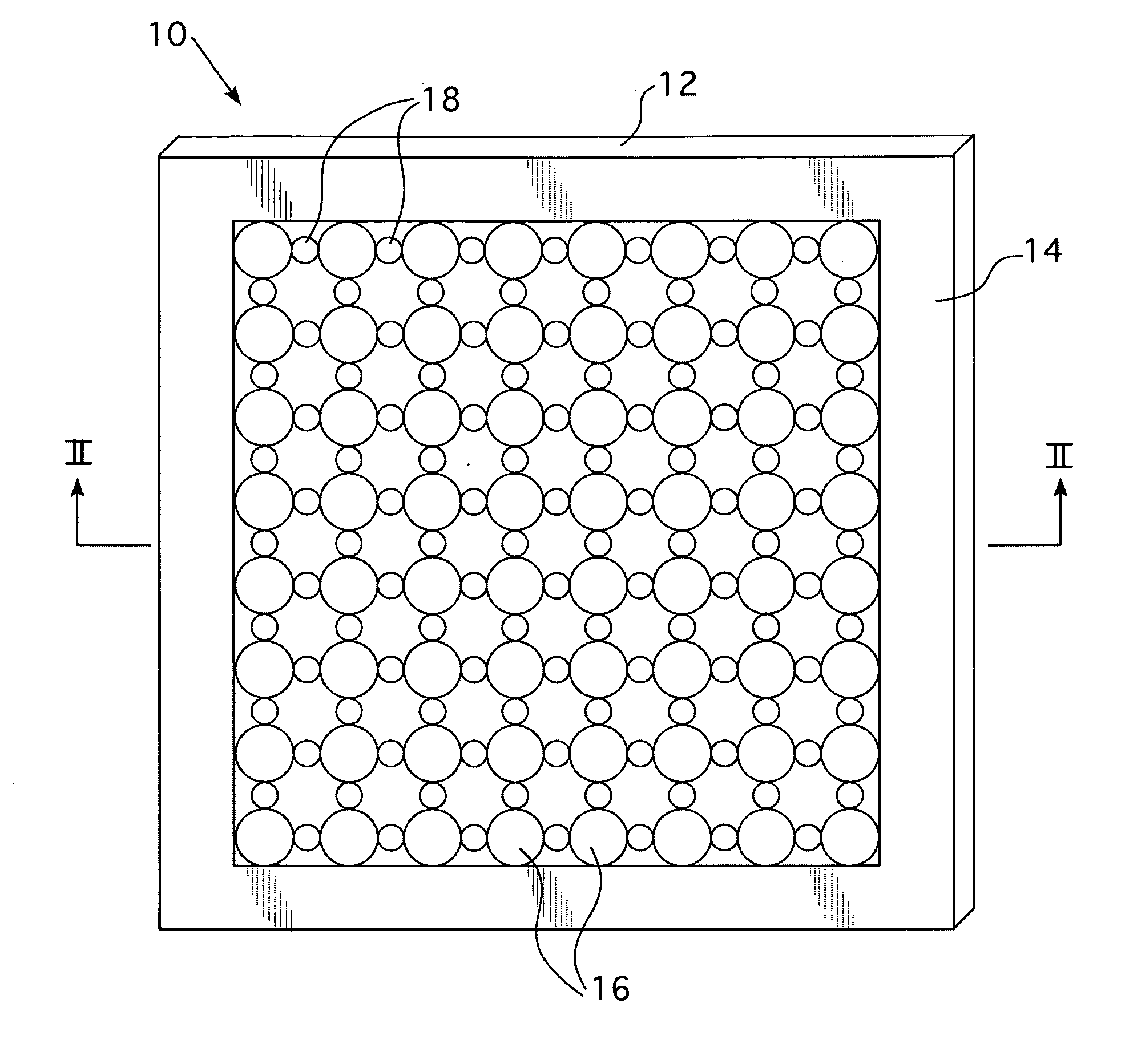Wound dressings
- Summary
- Abstract
- Description
- Claims
- Application Information
AI Technical Summary
Problems solved by technology
Method used
Image
Examples
Embodiment Construction
[0017]The present invention is directed to a galvanic current wound dressing having antimicrobial properties and to a method for treating a patient with the wound dressing. The dressing comprises a pliable base material, and a pattern of deposited metal flakes in a pattern whereby the metals comprise at least two metals which, upon touching, generate a galvanic current and which patterns of deposited metals overlap the two metal types in a repeating pattern. The deposited metal flakes are adhered to the pliable base material in a polymeric carrier.
[0018]Referring to the drawings, FIGS. 1-2 illustrate a wound dressing having the constituents described immediately above. The pattern of deposition in small and large circles is representative only—the silver and zinc in their respective carrier solutions may be deposited in any repeating pattern in which not only do some silver and some zinc touch but the deposition patterns actually overlap. Metals other than silver and zinc may be use...
PUM
 Login to View More
Login to View More Abstract
Description
Claims
Application Information
 Login to View More
Login to View More - R&D
- Intellectual Property
- Life Sciences
- Materials
- Tech Scout
- Unparalleled Data Quality
- Higher Quality Content
- 60% Fewer Hallucinations
Browse by: Latest US Patents, China's latest patents, Technical Efficacy Thesaurus, Application Domain, Technology Topic, Popular Technical Reports.
© 2025 PatSnap. All rights reserved.Legal|Privacy policy|Modern Slavery Act Transparency Statement|Sitemap|About US| Contact US: help@patsnap.com


